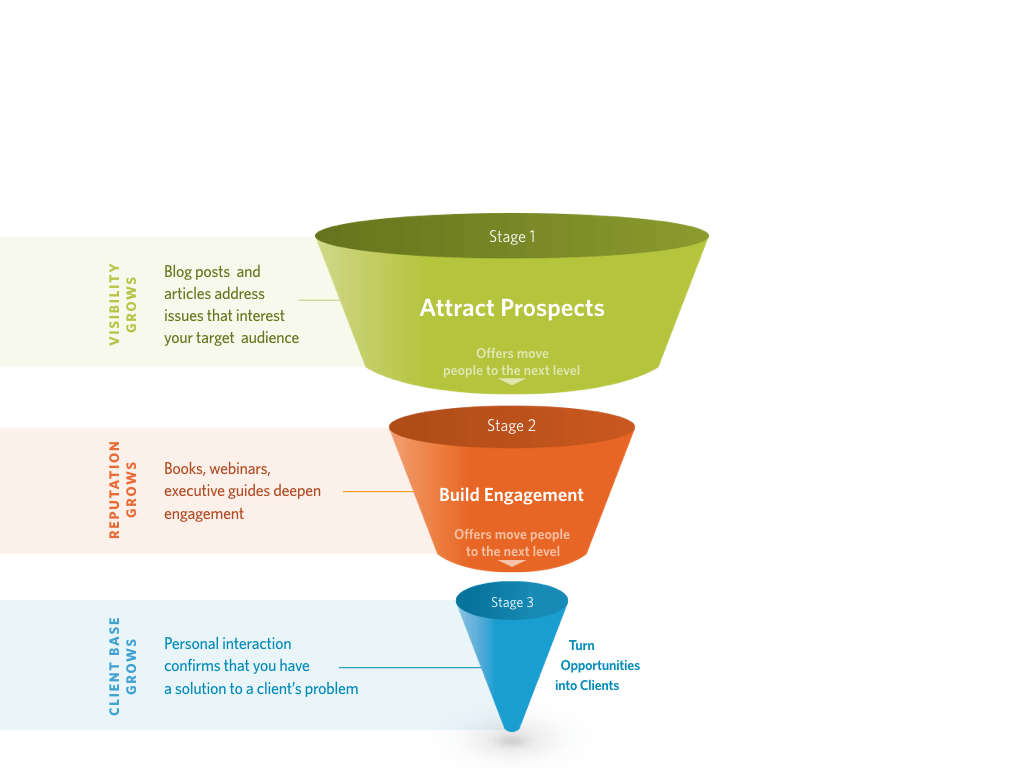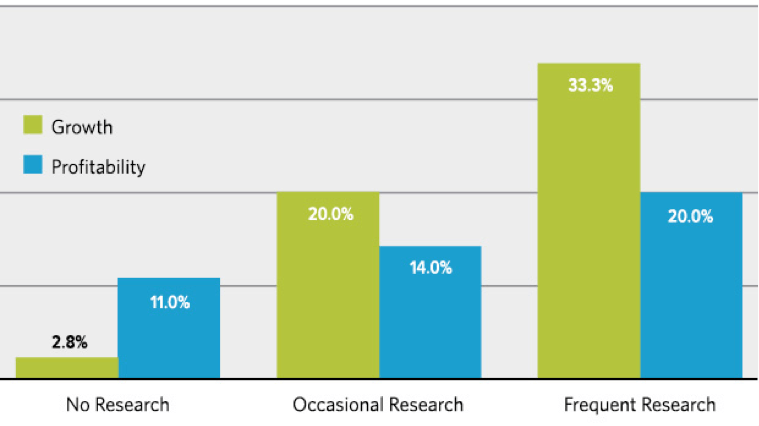If you have developed a referral marketing strategy, congratulations! But now comes the hard part: Building out your referral program and keeping it going.
Every good referral program requires three things:
- Visible expertise—To get a referral, you need to be known for something.
- Strategic content—To be known for something, you need to write about it.
- A receptive audience—Writing about your area of expertise doesn’t amount to much if it doesn’t reach the right audience.
Let’s start with your expertise, probably the most difficult piece of the referral program puzzle.
Making Your Expertise Accessible
The age-old art of the referral has changed—and this transformation stands to benefit firms that are prepared to share their specialized expertise. The first step is to consider the services you want to develop as areas of visible expertise.
Ask yourself:
- Which of our services produce the best results?
- In what areas does our marketplace research identify the greatest need or promise?
- Which of our services enjoy the strongest financial profile?
The more your decisions and your services are shaped by the demonstrable needs and challenges of your audience, the better placed your firm will be to resonate with them and spur new business. Factor in your specialties, differentiators, and positioning. Which issues are important to your audience and addressed by your firm?
Find the overlap and focus your efforts here—the problems where your specialized expertise is most relevant. Share blog posts, eBooks, webinars, and more on different platforms (like LinkedIn and Twitter) to educate your audiences and generate discussion. Make it clear how your content is relevant to their challenges and invite them to engage through comments or social media.
Social media should form a central part of your referral program and content strategy—but taken alone, it’s not enough. That is because not everyone will be accessible through social media or responsive to any one channel at any one time. For this reason, you need to take a diversified approach.

Here are several of the more crucial factors to consider:
Speaking engagements: Speaking at conferences and other industry events raises your visibility as an expert. Speaking engagements are in fact the top source for referrals. You may even find that some attendees self-refer, approaching you directly after they hear you speak.
More importantly, others in the audience will learn of your expertise, and when asked by a client or colleague, will be able to make the referral based on what they learned from you.
Search engine optimization (SEO): Optimize content for visibility in online searches and earning links to your content from others on the web. With a good SEO strategy, you make it easier for audiences to find you when they have a problem, or to check you out when they get a referral.
Professional partnerships: Consider participating in joint research, joint publications, jointly conducted events, or other pairings of expertise with another firm or professional association. Partnerships, like webinars with other experts from other organizations, bring a diversity of perspectives and foster an environment of collaborative learning.
Strategic Content
Now it is time to develop educational content to address the problems of your target audience, drawing a clear connection between their challenges and your expertise.
How aggressively you develop content will depend on the resources you are willing to commit to the endeavor. Some firms publish new blog posts a few times a month. Others post weekly, even daily. For blogs, we recommend posting at least once a week to keep your audience engaged and to give yourself plenty of opportunity to demonstrate your expertise thoroughly.
An effective referral marketing strategy will generally use both stock and flow content to build your reputation and share your expertise.
- Flow content, like blogs, is the sort of quick, everyday pieces meant to foster a conversation. A tweet or LinkedIn post might be another form of flow content.
- Stock content—research studies, books and guides—offers greater depth of discussion on an issue, and is designed to stand the test of time.
When the two styles of content work together, they create what we call the content funnel.
Some of the readers who download this content will continue to engage even more closely and eventually become clients. But even those that don’t can make informed referrals to your firm based on their grasp of your expertise, as well as share your content with others. This is the power of content for referral marketing—there are multiple ways it can generate new business.

The content funnel—flow and stock content work together in a referral program
As you decide how your referral program will use content, there is one more factor you will need to consider: your audience.
A Receptive Audience
In order to encourage referrals—and ultimately generate new business—it’s essential that you understand your target audience of buyers and influencers.
- What is important to them?
- What are their challenges and interests?
Without the answers to these questions, you’re moving ahead with some serious blind spots.
The key to getting past your strategic blind spots is research. In fact, it’s our own professional services marketplace research that has brought that lesson home. In a comparative study on professional services providers’ research habits, we found that research can make a powerful impact on a firm’s bottom line. In fact, firms that conduct systematic research grow 3 to 10 times faster and are up to 2 times more profitable.

The effect of research on growth and profitability
Why is research such a powerful predictor of growth and revenue? Well, if you’re not conducting regular research, you probably don’t know your clients and prospects as well as you think you do.
If there is an underserved niche, a need that’s not being met, or some other form of blind spot, you’ll find it with research. You will be able to effectively speak to the concerns of your target audience — and consequently encourage referrals based on your expertise and reputation.
If you don’t have the time and resources to conduct primary research, you might consider secondary research. In this approach, you can analyze other parties’ findings and make conclusions that will help guide your business. Independent industry organizations are often a good source for such data, though the disadvantages of secondary research are that you can’t control the parameters, currency, or quality of the data you use.
Of course, whether primary or secondary research, you need to start with the right questions. What kinds of challenges and priorities should you be asking about in the first place? Here, it’s helpful to do some good old-fashioned digging. Top areas to look for clues include:
- Your own online content. If you’re already publishing educational content, this can be a strong indicator. Identify high-performing content (in terms of views and shares). Are there are common threads in the subject matter? This can indicate an area of particular interest for your audience.
- Your network. Consult your sales, business development, and account teams to learn what questions and objections they encounter regularly. Are there any commonalties or surprises here? These may be areas to follow up on. The answers may be revealing.
- Online and in social media. The different social media platforms can be a great place to gather data without asking questions outright. What topics are trending in your industry? What issues are in the news, and what problems are people talking about?
Better yet, where does your target audience go for advice and insight? Where do they network? You can gain crucial information by looking up leaders among your target audience, finding which LinkedIn Groups they belong to, and following relevant conversations.
With the information you gather from these disparate sources, you should develop the raw material for some powerful questions and avenues of investigation. And by using research to understand your audience, you’ll have the basis for a focused and efficient referral marketing strategy, connecting more reliably with your audience and leading ultimately to new business.
SEE ALSO: How to Get Referrals: 5 Proven Strategies for Professional Services Firms
Additional Resources:
- Get a step-by-step guide to building a powerful referral strategy with our free Rethinking Referral Marketing
- Find out more on becoming a sought-after expert in your industry by downloading a free copy of The Visible Expert® book.
- Learn about the top 10 tips that will get you referrals that will actually become clients.
How Hinge can help
It’s time to rethink your referral marketing strategy. The Visible Firm® is the leading marketing program for delivering greater visibility, growth, and profits. This customized program will identify the most practical offline and online marketing tools your firm will need to gain new clients and reach new heights.


